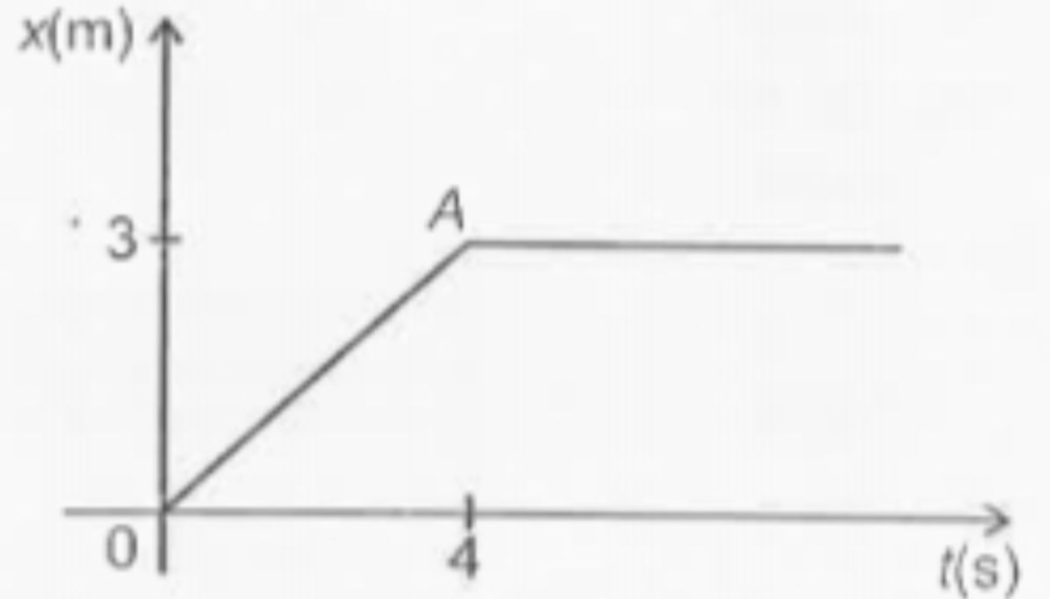Fig. shows the position-time graph of a particle of mass 4 kg. What is the (i) force acting on the particle for t<0,t<4s,0<t<4s? (ii) impulse at t = 0 and t = 4 s? Assume that the motion is one dimensional.
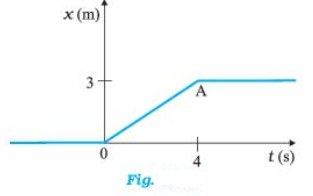
(a) When t lt 0 . As this part is horizontal , thus it can be concluded that distance covered by the particle is zero and hence force on the particle is zero .
When 0 lt t lt 4s . As OA has a constant slope, hence in this interval , particle moves with constant velocity ( 3/4 = 0.75 ms−1 . Hence force on the particle is zero.
When t gt 4s. As this portion shows that particle always remains at a distance of 3m from the origin i.e. the particle is at rest. Hence force on the particle is zero.
(b) Impulse at t = 0 . Here u = 0 , v = 0.75 ms−1 , M = 4 kg
∴ Impulse = total change in momentum = Mv - Mu
= M(v-u) = 4(0.75 - 0) = 3 kg ms−1 .
Impulse at t = 4s. Here u = 0.75 ms−1 , v = 0
∴ Impulse=M(v−u)=4(0−0.75)=−3kgms^(-1).
Topper's Solved these Questions
Similar Questions
Knowledge Check
Figure shows the position-time graph of a particle of mass 4kg. Let the force on the particle for t<0 , 0<tlt,4s , t>4s be F1,F2 and F3 respectively. Then
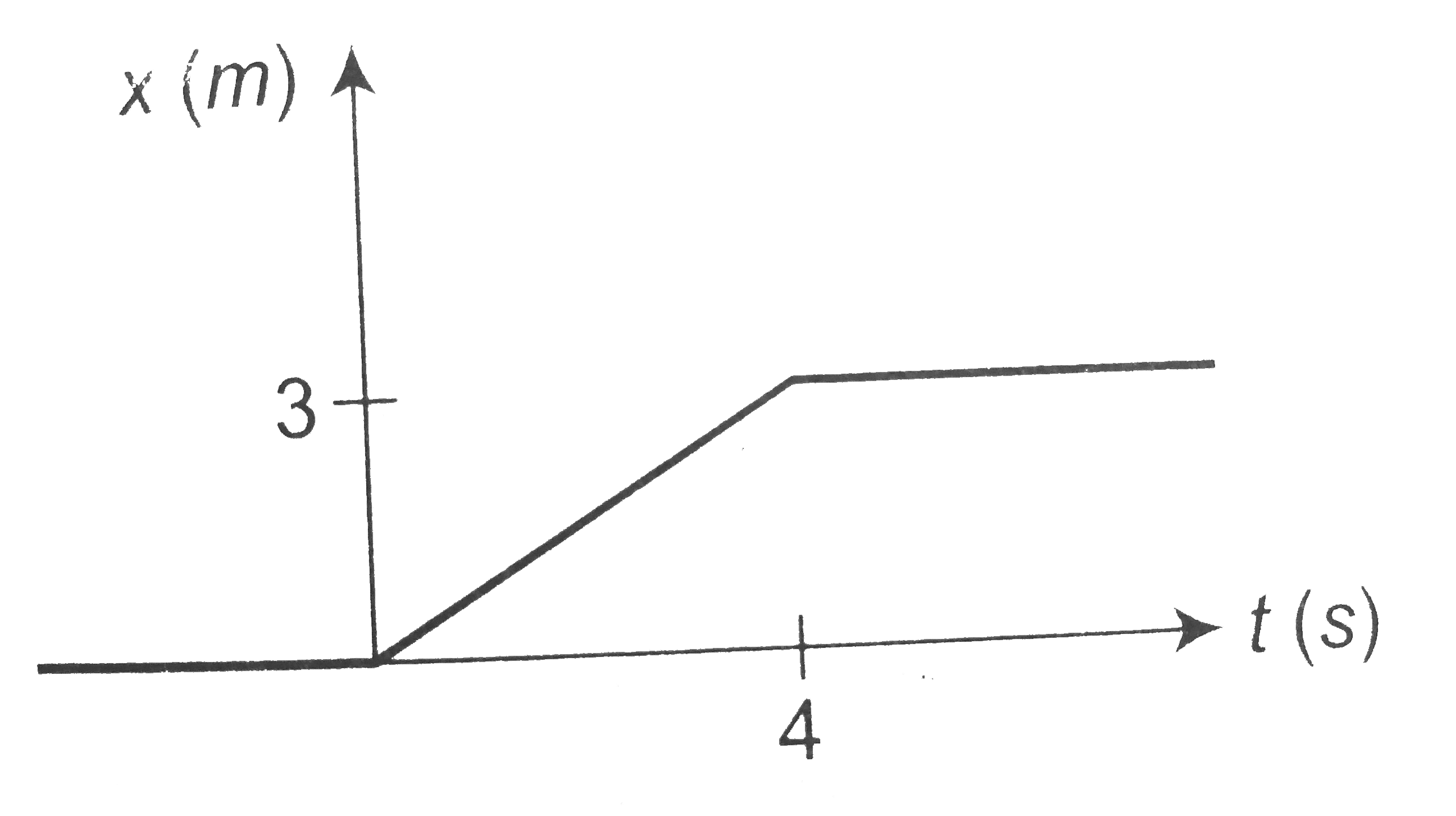 AF1=F2=F3=0BF1>F2=F3CF1>F2>F3DF1<F2<F3
AF1=F2=F3=0BF1>F2=F3CF1>F2>F3DF1<F2<F3The position time graph of a body of mass 2kg is as given in What is the impulse on the body at t=0 s and t=4s ?
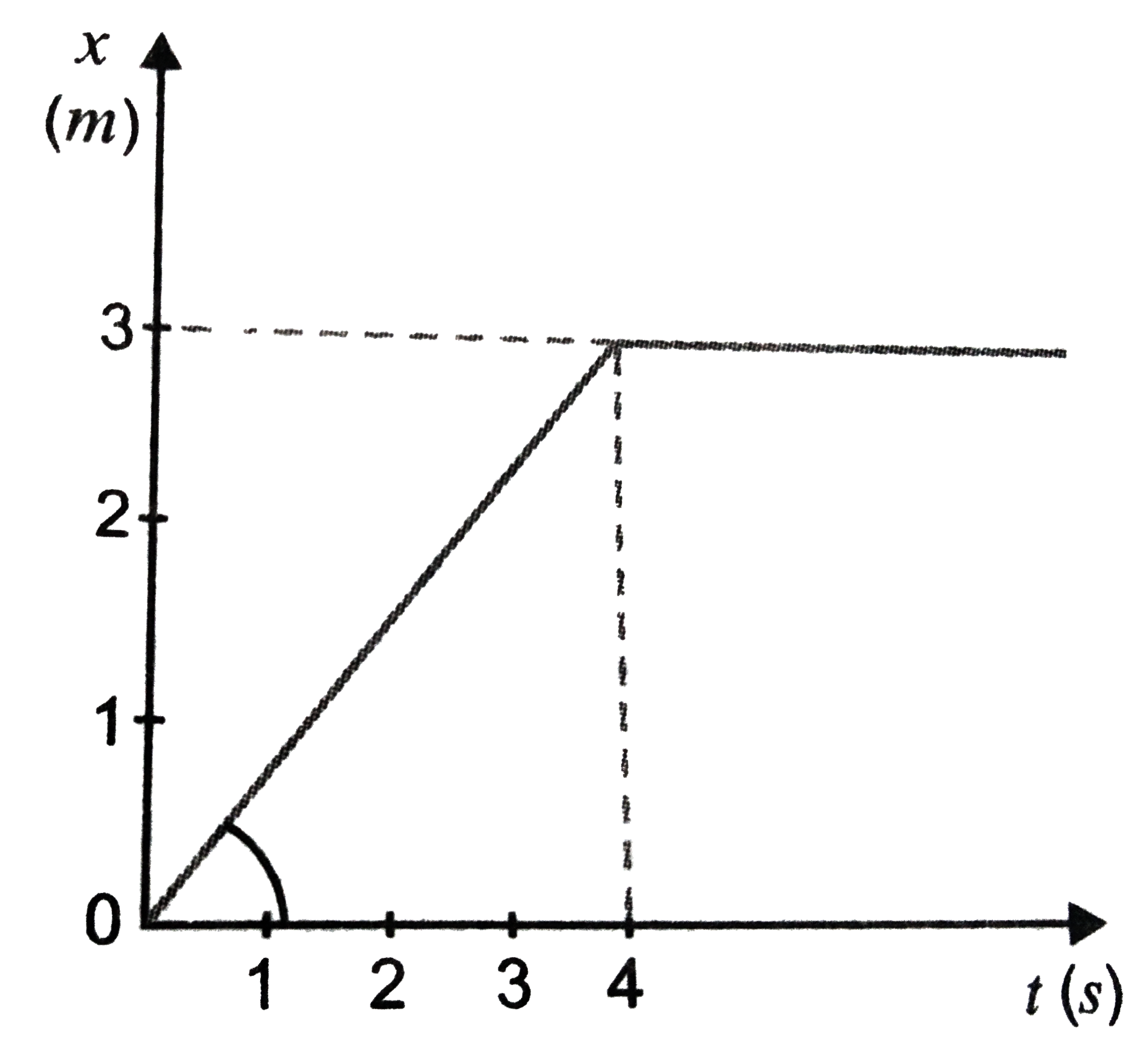 . A23kgms−1B−23kgms−1C32kgms−1D−32kgms−1
. A23kgms−1B−23kgms−1C32kgms−1D−32kgms−1
In the figure, the position time graph of a particle of mass 0.1 kg is shown. The impulse at t=2 second is :

View SolutionThe position-time graph of a body of mass 2 kg is as given in figure . What is the impulse on the body at t = 0 s and t = 4 s .
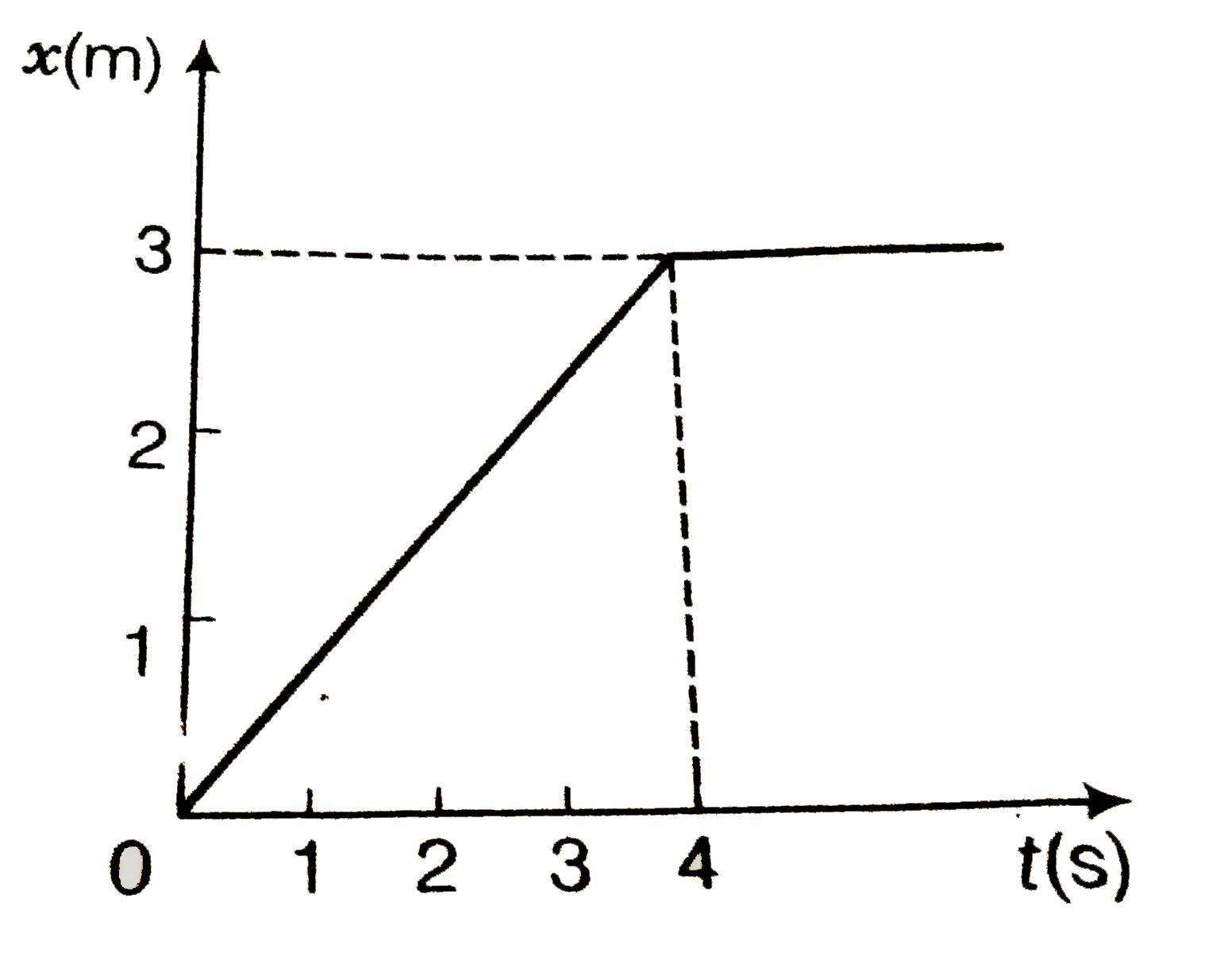
View SolutionThe position (X)-time (t) graph for a particle of mass 1 kg moving along x-axis is shown in figure. Find impulse on particle at t = 4 s.
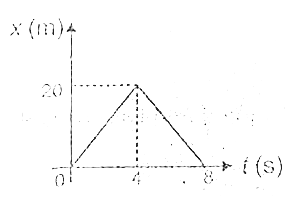
View SolutionForce-time graph of a particle of mass 6 kg is shown in figure, then change in linear momentum during t = 0 to t = 10 s is
View SolutionIn the figure given below, the position time graph of a particle of mass 0.1kg is shown. The impulse at t=2 sec is

View SolutionFigure shows the speed versus time graph for a particle. Find the distance travelled by the particle during the time t=0 to t=3s.
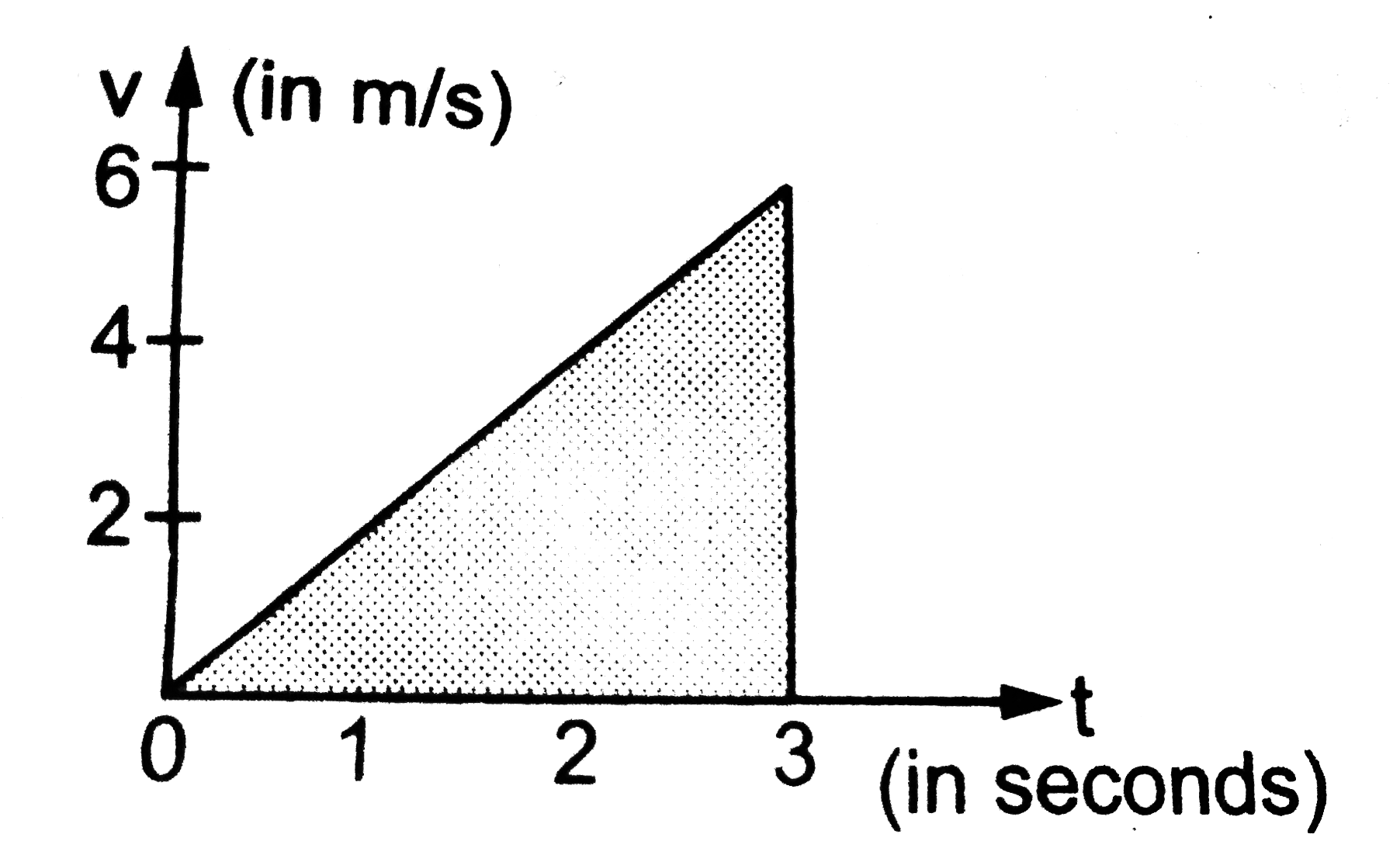
View Solution

